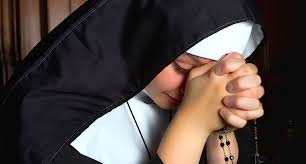The development of the English
Language:
English is an Indo-European language.The Indo-European languages, spoken today on very continent and by fully half the world's population. All descend from one common ancestor known as Proto-Indo-European.
The oldest written remnants of any Indo-European language are in Hittite and date from the 17 (th) century B.C.. Indo-European languages are Italian, Greek, French, Spanish, Portuguese, Russian, Albanian, Armenian. German, and many others. English belongs to the Germanic branch of Indo-European, together with German, Dutch and the Scandinavian languages. English is the result of the linguistic contributions made during a number of invasions and mass migrations over the centuries.
English was preceded by Celtic and then, to some extent, by Latin and finally by the dialects and languages of Germanic tribes from across the North Sea.
Within the development of the language it is possible to distinguish three main periods:
- Old English ( 449-1100)
- Middle English ( 1100-1500)
- Modern English - Early Modern English ( 1500-1700) and Modern English ( since 1700)
- Old English or Anglo-Saxon ( 449-1100)
Old English derived from the gradual fusion of the languages spoken by the Saxons, the Angles and the Jutes, three Germanic tribes that invaded Britain in the 5( th) century.
Old English had:
- Inflection
- cases for nouns and adjectives
- the -an- ending for infinitives
- a spelling and pronunciation so different
- a particular type of alphabet which consisted of a series of mysterious characters called "runes". ( Christianity condemned as a pagan symbols and replaced by the Latin alphabet).
- Middle English:
At first there was great linguistic confusion, however, gradual changes took place.
When Middle English finally emerged as a literary language, it was quite different from the Anglo-Saxon of the previous period.
Middle English had:
- Mercian replaced West Saxon.
- words were accented in a different way, the stress tending to shift to the first syllabe, while the final vowels were all changed into the vowel /e /
- inflections were strongly reduced
- adjectives were no longer inflected, except for final -e, which remained to mark the plural.
- the plural of nouns and the genitive singular were marked by the -es ending
- the definite article - the
- infinitives - an- began -to
- introduction of French words in food ,religion,law contexts
The new form of English were spoken by all classes
- Modern English:
- Early Modern English:
Marked by changes in the pronunciation of a vowel sounds. The final -e became silent as we can see in Shakespeare. The spelling became more uniform and the were the introduction of new words from Greek and Latin, as well as from Italian and French.
- Modern English ( since 1700)
The language became subject to greater control and organization. Dictionaries began to appear, as well as grammar books based on Latin syntax. Following the growth of the British Empire and trading exchanges with distant colonies, the vocabulary of English became a cosmopolitan language.The progress in science and technology also contributed.
Modern English had:
- The relative simplicity of grammatical structure, without extensive inflections
- the wealth of synonyms
- The flexibility of verbs which, combined with a variety of prepositions and particles, can convey different meanings





